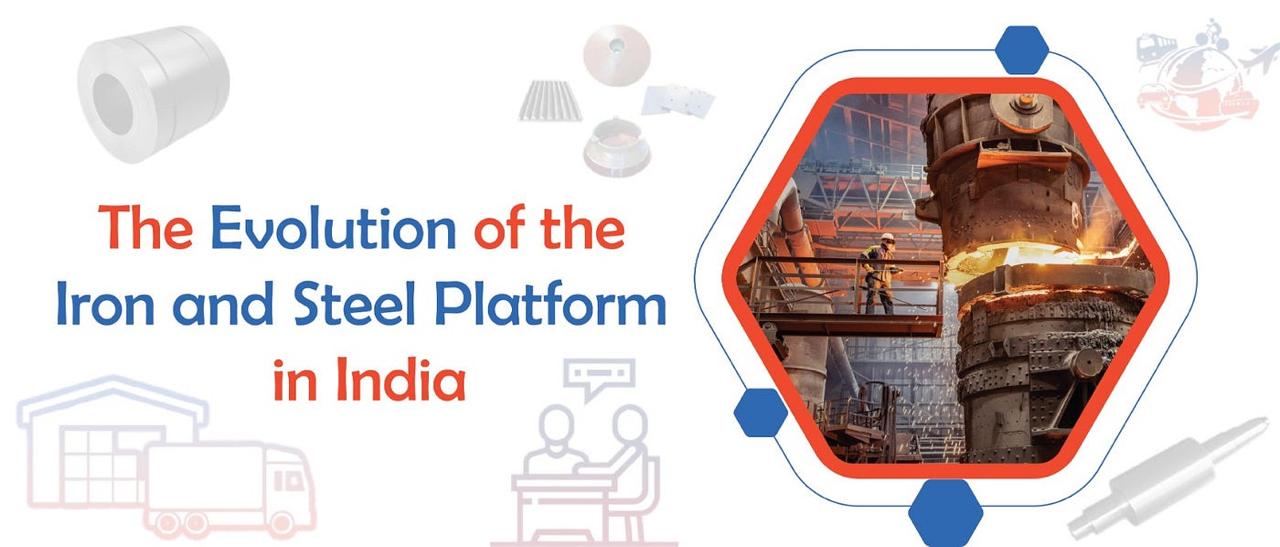The Evolution of the Indian Iron and Steel Industry in India is dynamic, continuously adapting to technological advancements, market shifts, and government policies. Despite challenges such as global steel price fluctuations and environmental concerns, India has proven resilient, emerging as the world’s second-largest producer of crude steel. This sector not only contributes significantly to the Indian economy but also plays a pivotal role in the global market.
India’s journey in the iron and steel sector reflects a rich historical legacy dating back to ancient times when the country pioneered metal manufacturing as early as 1600 BCE. Modern industrialisation, however, took root in 1907 with the establishment of the first steel plant. Since then, the industry has evolved substantially, integrating with various sectors including construction, transportation, and advanced technologies like gadgets and robotics.
Today, India’s iron and steel industry stands at the forefront of globalisation, with direct and indirect ties to nearly every other industry. As the industry navigates challenges such as fluctuating steel prices and stringent environmental regulations, its resilience and adaptability continue to drive growth and innovation on both domestic and global scales.
This robust industrial landscape underscores India’s strategic position as a key player in the global steel market, poised to shape the future of the industry through innovation, sustainable practices, and strategic partnerships.
Industry Overview and Classification
Contributing 2% to India’s GDP and employing 2.5 million people, the industry is set for growth. Fueled by a burgeoning economy, increasing steel demand, and government infrastructure focus, the sector is navigating challenges, including those posed by the COVID-19 pandemic.
Recent Achievements and Growth Prospects
Despite pandemic challenges, the Indian steel sector has witnessed growth, backed by government plans, rising investments, and increased steel consumption. This article delves into recent achievements, investment plans, and the growth prospects shaping the future of the steel industry in India.
Current Trends in the Iron and Steel Industry in India
Highlighting a significant trend, Indian Steel Companies are steering towards high-quality, value-added products. Investments in advanced technologies aim to produce steel with superior strength, durability, and corrosion resistance, catering to the demands of automotive, construction, and engineering sectors. The industry is also addressing environmental concerns by investing in renewable energy sources to reduce carbon emissions and implementing measures to cut water usage, waste generation, and air pollution.
Post Pandemic Status of the Iron and Steel Industry
Post-COVID, the industry experienced a robust rebound globally, aided by infrastructural investments. However, the Ukrainian crisis intensified inflationary pressures, impacting supply chains and leading to a surge in coal and gas prices, subsequently influencing steel prices.
Future Prospects for the Iron and Steel Industry in India
1. Infrastructure Development:
The future of the Indian iron and steel industry looks promising, driven by substantial infrastructure development. Government initiatives for new highways, railways, airports, and ports will necessitate substantial steel production, with an added emphasis on affordable housing and smart cities.
Backed by abundant iron ore reserves, India benefits from policies like the National Steel Policy 2017, Make in India initiative, and the PLI Scheme. These initiatives aim to elevate India’s steel production capacity to 300 million tonnes by 2030, enhancing its global presence.
3. Automotive Sector and Steel:
The automotive sector’s growing demand, especially with the rise of electric vehicles, positions steel as a crucial material. India’s prominence in the global automobile market contributes to the anticipated increase in steel demand.
The integration of advanced technologies such as artificial intelligence, robotics, and automation is a key focus for enhancing efficiency and productivity. Continuous exploration of new materials and processes further aims to reduce the industry’s environmental impact while improving steel product performance.
In conclusion, the Indian iron and steel industry, marked by innovation, sustainability, and government support, is poised to be a key player in the nation’s economic development and global competitiveness in the years ahead.

